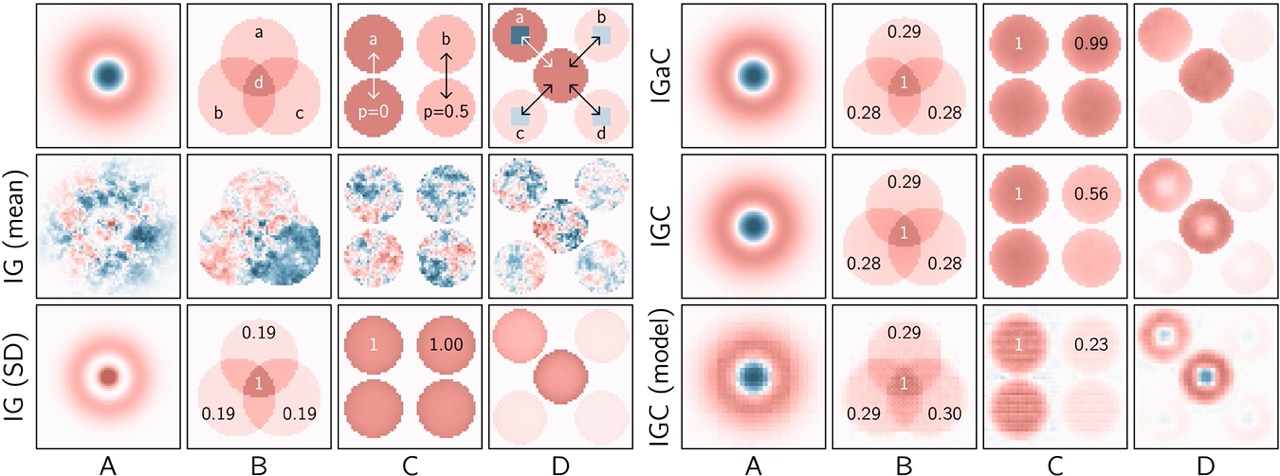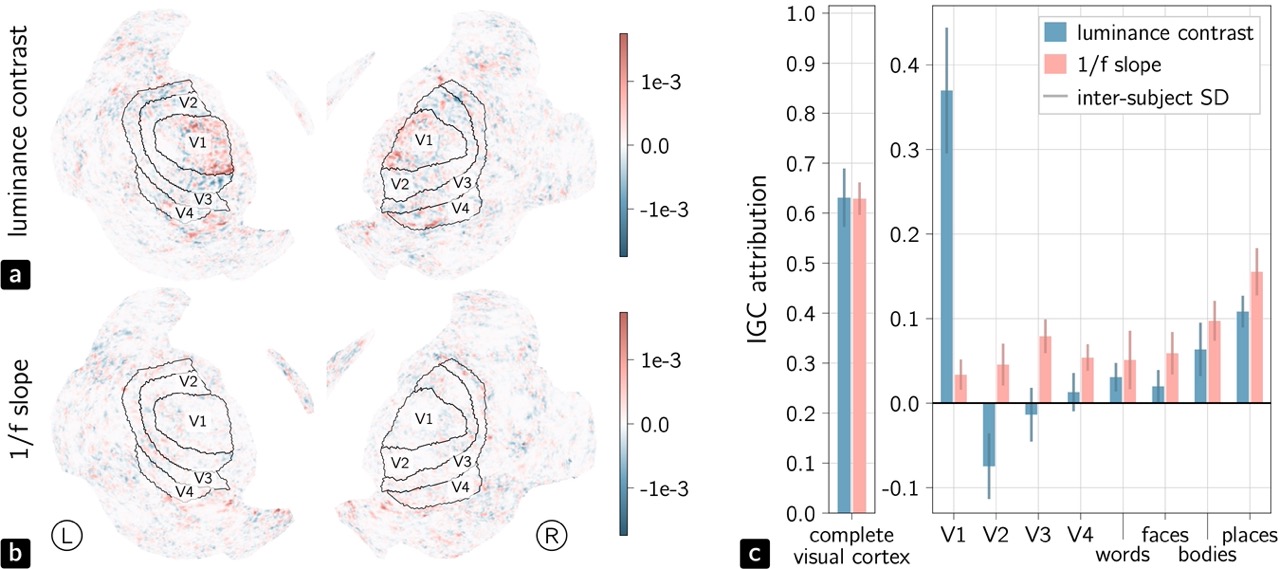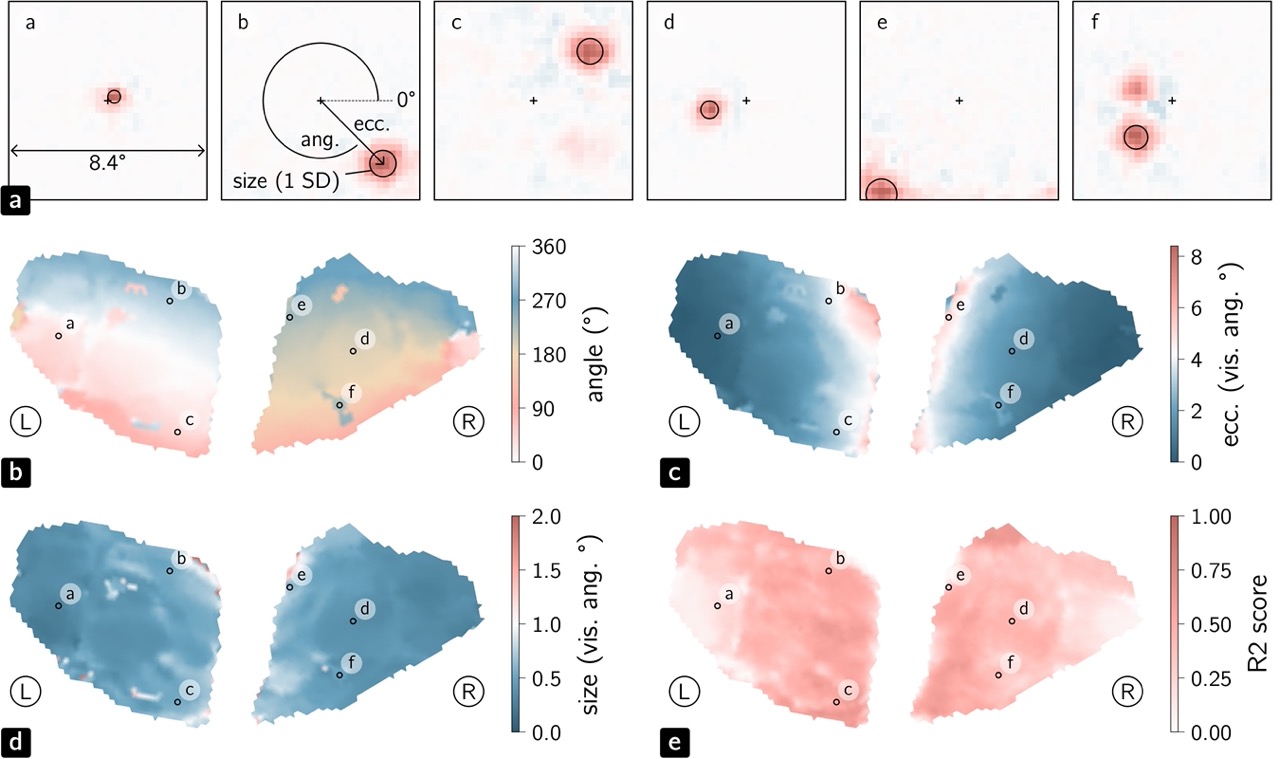Examples#
Environment Installation#
Create and activate a conda environment named int_grad_corr`
conda env create -f examples/environment.yml
conda activate int_grad_corr
- If you have a GPU supporting CUDA, you can also use the file namedenvironment_gpu.yml.
Install the IGC package with pip
pip install .
IGC Benchmark#
In order to assess the relevancy of IGC attributions compared to other naive dataset-wise attribution methods, we propose synthetic experiments. We first define some localized image statistics computed on random images, and then try to recover the generating masks/rules from the pairs of original images and computed statistics. To make this procedure feasible, generated random images are designed to respect the spatial frequency distribution of natural images (i.e. having some spatial redundancy). For more details, look at the Benchmark section of the original IGC paper.
Note
These example are available as a notebook.

Representation of Image Statistics in the Brain#
IGC is employed on a deep decoding model that predicts image statistics from the neural activity (fMRI) induced by the vision of corresponding image stimuli. IGC attributions then enable the investigation of the representation of image statistics in the brain.
Note
Not released yet. See more information in the original IGC paper.

Visual Receptive Field of Neural Populations#
IGC is employed on a deep encoding model that predicts the neural activity (fMRI) from original image stimuli. IGC attributions then reflect the localized image area for which each group of neurons is responsive, i.e. their population receptive field (pRF).
Note
Not released yet. See more information in the original IGC paper.
